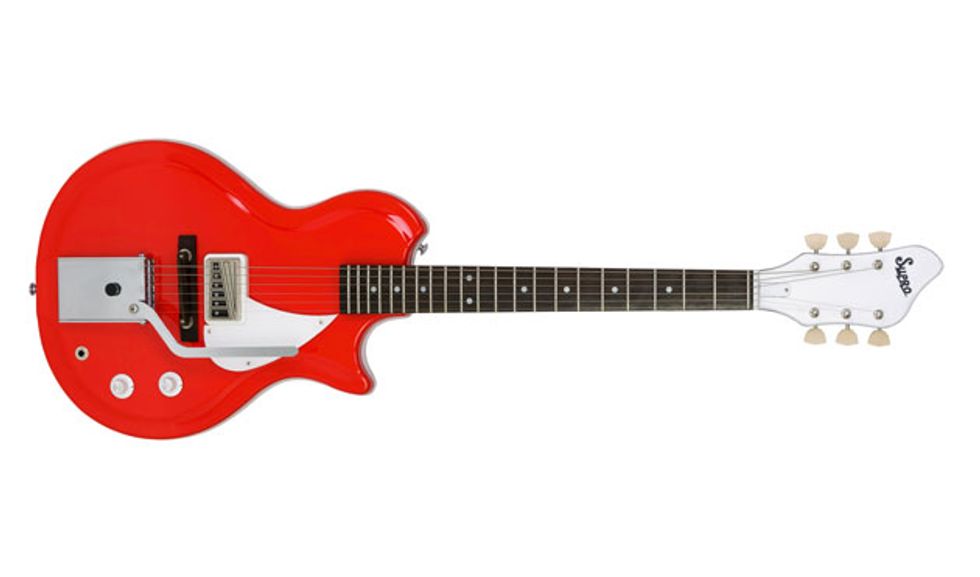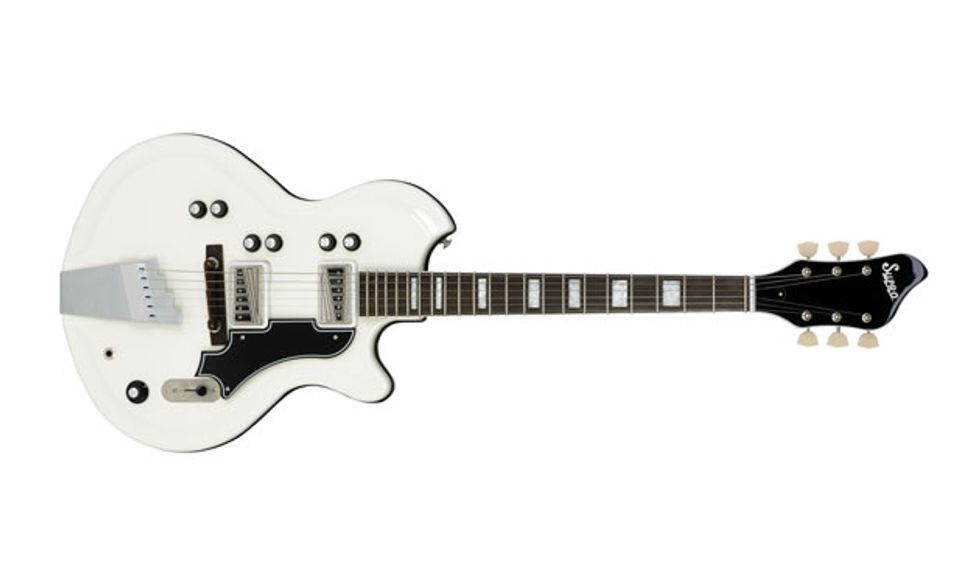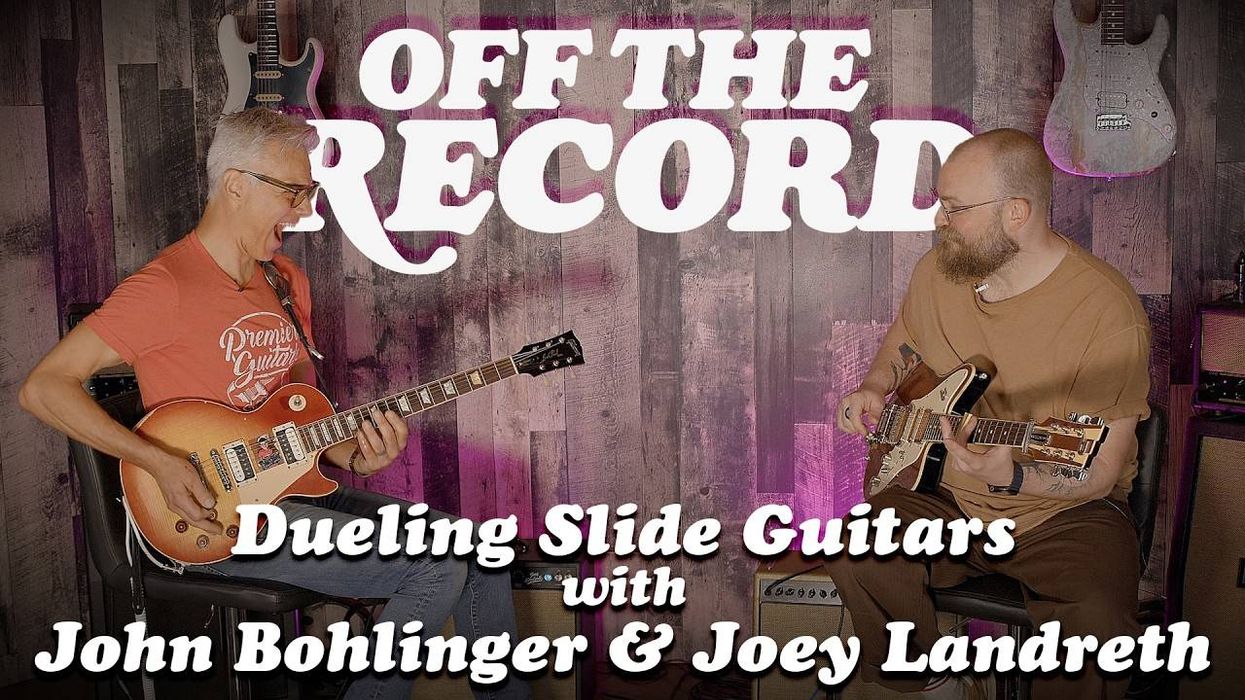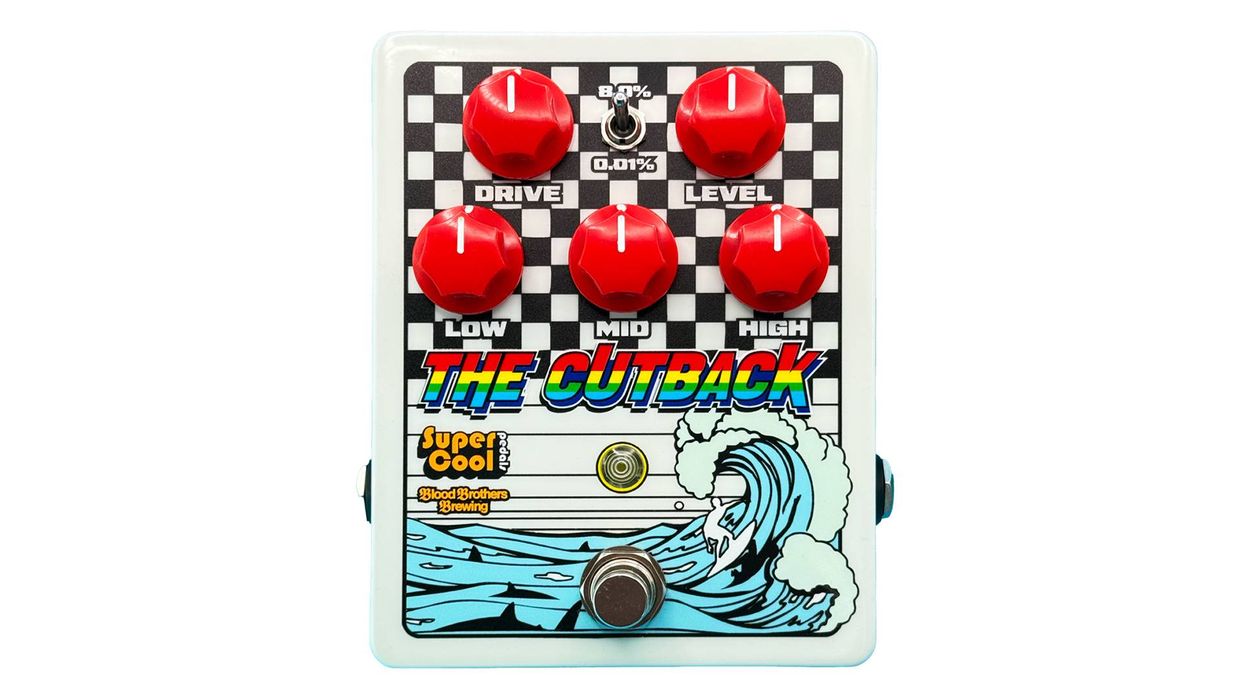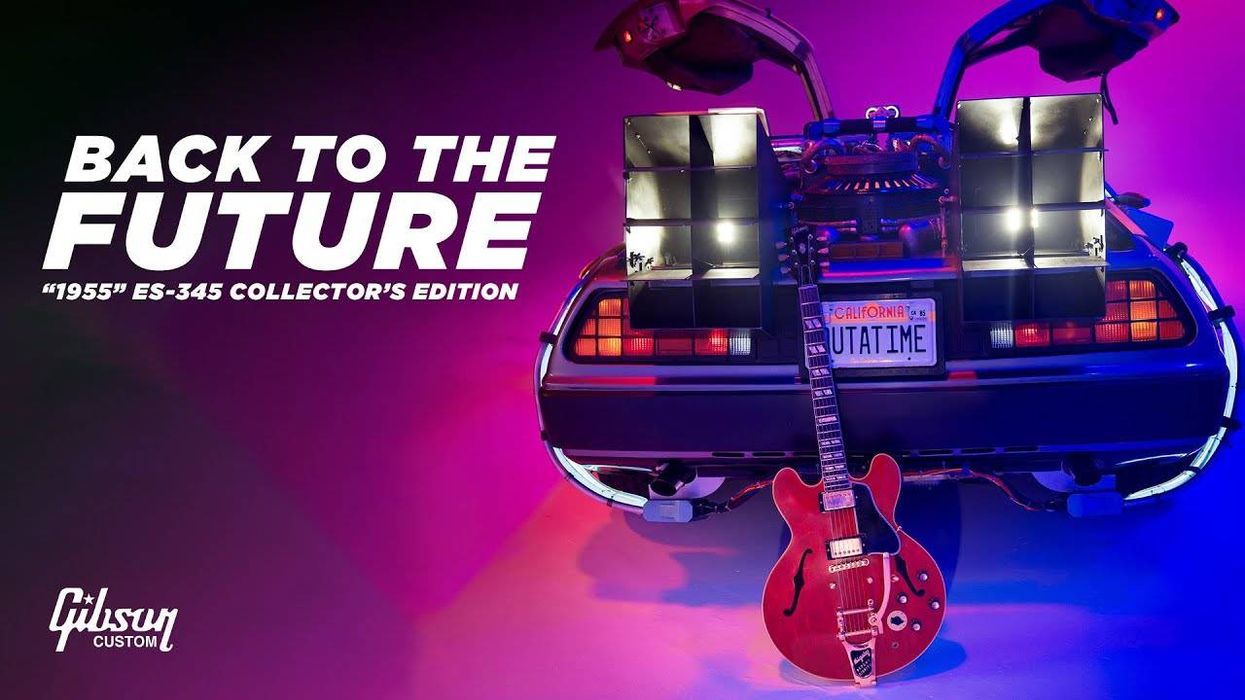Anaheim, CA (January 17, 2016) -- Supro revival has taken the MI industry by storm since the company's iconic lightning bolt logo made its triumphant return at Winter NAMM in 2014. Building on a storied legacy that dates back to the origins of rock 'n' roll music and the first electrified instruments, Supro has now announced the introduction of 14 new electric guitars based on the best-selling vintage models from this legendary American brand.
The look and sound of Supro guitars is instantly recognizable due to their distinctive Art Deco style and historic associations with guitarists including a young Jimi Hendrix (Ozark), Link Wray and David Bowie (Dual-Tone) as well as modern-day blues heroes, Joe Perry of Aerosmith (Ozark) and Dan Auerbach of the Black Keys (Martinique). Working with master-designer Trev Wilkinson, vintage pickup expert Ken Calvet and virtuoso luthier Glenn Sweetwood, Supro USA has updated the playability of these classic designs while meticulously capturing the period-correct electronics and unique construction details that set the original Chicago-made Supro models apart from their contemporary rivals back in the '60s.
The Americana Series guitars are replicas of the Supro "reso-glass" instruments, uniquely constructed with a chambered mahogany body and resonant molded top. This semi-hollow recipe retains the unique sonic characteristics of the vintage Supros while providing today's musicians with a lightweight, highly playable instrument that stays in tune and is easy to maintain. The ten distinctive models in the Americana reissue series come loaded with authentic "Vistatone" pickups, which reproduce the groundbreaking, single-coil design developed by Valco in the early 1950s. These historic reissues are available in two body styles with a range of available hardware options, including piezo body sensors and a newly developed floating vibrato system. Americana Series guitars range in price from $699 to $1,299.
The Island Series guitars are updated, high-performance instruments based on the 1962 version of the Supro Ozark. The timeless curves of this vintage solidbody design have been enhanced with ergonomic set-neck construction, satin-neck finish and comfortable 12" radius with rolled fretboard edges. All three of the Supro Island Series models come equipped with vintage Gold Foil pickups--accurate replicas of the original Supro "Clear-tone" pickups of the '50s and '60s. These unique, field-coil pickups are low-noise single coils with no pole pieces, an extra-wide magnetic field and a huge, broadband tone. The Island Series guitars are available in single, double, and triple pickup configurations with a range of unique metallic colors as well as black, white, or tobacco flame maple. Island Series guitars range in price from $899 (Jamesport) to $1,199 (Hampton w/ flame top).
Supro guitars will make their public debut at the NAMM Show in Anaheim, January 19-22, 2017. In development since the acquisition of Supro by Absara Audio in 2013, Supro guitars are in stock now and shipping to authorized Supro dealers around the world.
Watch the company's video demo:
For more information:
Supro
